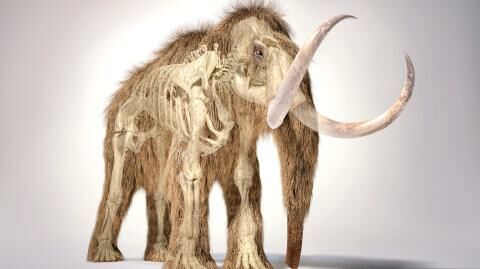Around 100,000 years ago, a huge drop in temperature took place in the northern hemisphere of the globe. This last ice age, which ended 11,000 years ago, saw the prosperity of numerous animal species such as the musk ox, the legendary woolly mammoth and the steppe bison.
Discover our latest podcast
The Steppe Bison during the Ice Age
Now extinct, the steppe bison inhabited the whole of the European continent as far as eastern Russia during the Pleistocene from 1,900,000 to 9,000 years ago. Taller and more massive than today's bison, the steppe bison had long upward-pointing horns.
This 9,000-year-old steppe bison was so well preserved, tissue samples were retrieved from all of its major organs https://t.co/ZHy5kkfbRQpic.twitter.com/gjbgAPSnie
— Prof Jamie Woodward (@Jamie_Woodward_) August 28, 2017
The ice age, although fatal for many animals, still allowed the conservation of many species trapped in ice and snow. This is the case for the 'bison priscus' (scientific name) that was discovered.
Mummified bison
Called the 'Yukagir bison', the specimen in question is perfectly preserved, so much so that the beast, found in the plains of Siberia, is mummified as if frozen in the past. It is the most complete specimen known to date.
Dating from 9300 years before our era, this discovery tells us a lot about the morphology and anatomy of the prehistoric beast. Indeed, we can observe the mummified remains, its brain, its heart, some blood vessels and the whole of its digestive system!
An important resource for scientists
The preservation of the animal's body is such that researchers can surmise the cause of its death. Given the lack of fat around the abdomen, scientists assume that the animal may have died of starvation.
Dr Natalia Serduk of the Russian Academy of Sciences in Moscow testifies:
The Yukagir bison mummy is the third of four complete mummies of this species discovered in the world, and one of two adult specimens preserved with their internal organs and stored under freezing conditions
Evgeny Maschenko, also a researcher at the Moscow Institute of Palaeontology, said:
The exclusively good preservation of the Yukagir bison mummy allows direct anatomical comparisons with modern species of bison and cattle, as well as with extinct species of bison that became extinct at the boundary between the Pleistocene and the Holocene,
This article was translated from Gentside FR.
Source used:
-Geologyin: complete 9000 year old frozen bison mummy found in Siberia















